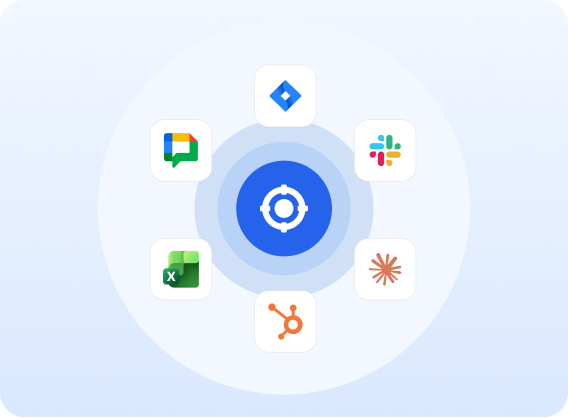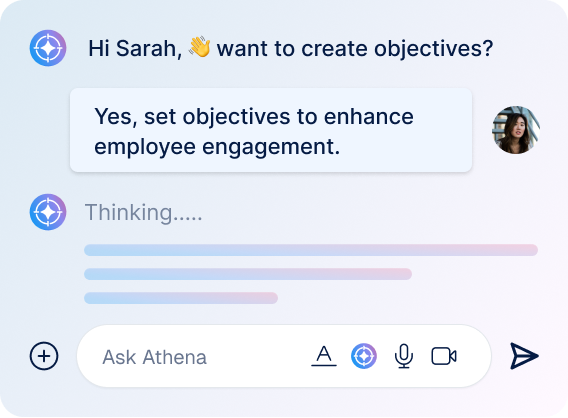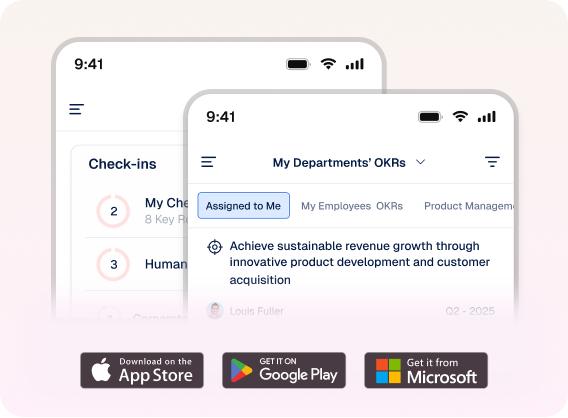TL;DR: Balanced Scorecard in Education
Schools need to measure more than just test scores – the Balanced Scorecard framework helps evaluate student success across four key areas: Learning & Growth, Internal Processes, Student Success, and Financial Health.- Problem: Current education relies too heavily on standardized tests, missing critical skills like creativity, collaboration, and emotional intelligence
- Solution: Balanced Scorecard framework adapted from business to education
- Four Perspectives:
- Learning & Growth (faculty development, technology)
- Internal Process (curriculum, teaching methods)
- Student Success (academic + social-emotional skills)
- Financial Health (strategic investments, partnerships)
- Benefits: Holistic student development, better future preparation, aligned institutional goals
Introduction
The challenges facing modern education in the age of AI have just become more complex. However, Educational leaders across the globe face a fundamental question. Are we truly preparing students for success, or simply preparing them for tests? The constant contradiction facing educational leaders, parents, and children alike is when students demonstrate exceptional collaborative leadership during a group project, show remarkable growth in critical thinking, and display genuine curiosity about complex topics. Yet, their academic evaluation hinges primarily on standardized test performance. This complete disconnect between meaningful learning and traditional, accepted global assessment methods has prompted progressive educators in Higher Education Institutions to seek more comprehensive measurement approaches.Education is the most powert weapon which you can use t change the world.
- Academic Tunnel Vision: Traditional assessments measure knowledge retention but often miss knowledge application, creativity, and innovative thinking.
- One-Dimensional Evaluation: Test scores provide a snapshot of performance on a specific day rather than demonstrating learning growth over time.
- Missing Critical Skills: Essential 21st-century competencies like collaboration, adaptability, emotional intelligence, and complex problem-solving remain unmeasured.
- Inadequate Future Preparation: Students entering today’s dynamic workforce need skills that extend far beyond test-taking abilities.
- AI-Era Disconnect: In an age where artificial intelligence can generate content and solve routine problems instantly, traditional assessments fail to measure uniquely human capabilities like ethical reasoning, creative synthesis, and contextual judgment.
How can the Balanced Scorecard Framework help Educational Institutions prepare for the future?
The Balanced Scorecard (BSC) offers educational institutions a sophisticated yet practical approach to performance measurement. Initially developed for corporate strategic management, this framework has been successfully adapted to address the unique challenges of educational environments.Aligning school or university goals with performance metrics
The goal of education is to create a solid life-long learning foundation, cultivate and develop skills, and nurture intellectual growth. Aligning goals with performance metrics requires institutions to prioritize aspects that measure the quality and depth of learning rather than measures of what students know.Extending success measurement beyond academics
Educational institutions must shift focus from traditional academic metrics to truly evaluate student success. Assessments should add non-cognitive factors such as engagement levels and social-emotional skills when gauging learners. This multifaceted approach creates a positive environment that supports and nurtures students beyond academics. The Balanced Scorecard evaluates institutional performance across four interconnected perspectives:1. Learning & Growth Perspective
Desired outcome: Building Educational Organizational Capacity
This perspective focuses on the institution’s ability to innovate, improve, and learn. Key components include:- Faculty Development: Professional learning opportunities, skill enhancement programs, and pedagogical innovation
- Organizational Learning: Knowledge sharing, best practice adoption, and continuous improvement processes
- Technology Integration: Strategic use of educational technology to enhance learning outcomes
- Research and Innovation: Investment in educational research and evidence-based practice implementation
2. Internal Process Perspective
The goal: Operational Excellence in Education
This dimension examines how effectively the institution delivers its core educational mission:- Curriculum Design: Alignment with learning objectives, relevance to future needs, and interdisciplinary integration
- Teaching Effectiveness: Instructional quality, differentiated learning approaches, and student engagement strategies
- Assessment Practices: Comprehensive evaluation methods that capture diverse forms of learning
- Support Systems: Academic support, counseling services, and learning resource accessibility
3. Student Stakeholder Perspective
The outcome needed is Comprehensive Student Success
This perspective expands the definition of student success beyond academic achievement:- Academic Growth: Progress in subject mastery, critical thinking development, and knowledge application
- Social-Emotional Development: Leadership skills, collaboration abilities, and emotional resilience
- Engagement Metrics: Participation in learning, extracurricular involvement, and community connection
- Post-Graduation Outcomes: College readiness, career preparation, and lifelong learning orientation
4. Financial Perspective
Sustainable Resource Management
This dimension ensures responsible stewardship of educational resources:- Resource Allocation: Strategic investment in programs that drive student outcomes
- Cost Effectiveness: Maximizing educational impact per dollar invested
- Financial Sustainability: Long-term viability and growth capacity
- Community Investment: Leveraging partnerships and stakeholder support
Ready to Measure What Truly Matters? Start Your School’s Balanced Scorecard Journey Today
How Can You Implement the Balanced Scorecard in Higher Education Institutions
The Balanced Scorecard is not merely a performance measurement, but also enables alignment of organizational strategy with daily operations.- Strategic Alignment: Leadership connected district vision with specific, measurable objectives across all four perspectives.
- Data-Driven Decision Making: Regular monitoring of balanced metrics enabled rapid identification and correction of performance gaps.
- Stakeholder Engagement: Transparent reporting built community confidence and stakeholder investment in improvement efforts.
- Sustained Improvement: The school achieved gains not only in traditional metrics but also in teacher retention, student engagement, and community satisfaction.

What are the Balanced Scorecard Implementation Considerations
Successful BSC adoption requires thoughtful planning and sustained commitment:
- Leadership Alignment: Senior administrators must champion balanced measurement and model data-driven decision making.
- Stakeholder Engagement: Faculty, students, parents, and community members should participate in defining success metrics.
- Technology Infrastructure: Robust data collection and analysis systems, such as an intuitive Balanced Scorecard software, will enable effective BSC implementation.
- Professional Development: Staff need training in balanced measurement principles and data interpretation skills.
- Continuous Refinement: Regular review and adjustment of metrics ensures ongoing relevance and effectiveness.
Balanced Scorecard in Education: Key Performance Indicators That Drive Success
Effective BSC implementation requires carefully selected metrics that reflect institutional priorities: Academic Excellence Indicators- Graduation rates and college enrollment percentages
- Growth in critical thinking and problem-solving assessments
- Portfolio-based learning demonstrations
- Peer and self-assessment outcomes
- Student engagement and satisfaction surveys
- Participation rates in enrichment activities
- Social-emotional learning progress indicators
- Alum success tracking and feedback
- Teacher retention and professional satisfaction rates
- Resource utilization and cost-per-student outcomes
- Technology integration effectiveness
- Community partnership development
- Faculty professional development participation
- Innovation project implementation
- Research and best practice adoption rates
- Organizational learning and knowledge sharing metrics
What are the Benefits of Using the Balanced Scorecard in Higher Education Institutions?
Educational institutions that use the balanced measurement approaches gain several competitive advantages:Enhanced Decision Making: Leaders access comprehensive data for strategic planning and resource allocation decisions.
Improved Stakeholder Communication: Balanced reporting demonstrates institutional commitment to holistic student development.
Cultural Transformation: Organizations shift from compliance-driven to improvement-focused mindsets.
Enhancing accountability: Accountability provides a clear picture of future strategies. Aligning all management levels provides leaders with access to meaningful performance data.
Sustainable Excellence: Balanced measurement supports long-term institutional health rather than short-term performance spikes.
Encourages continuous improvement: Comparing strategic goals to current performance keeps the institution’s efforts focused on long-term goals and objectives.
This transparency also encourages mutual understanding of performance goals and expectations, which increases individual accountability. Furthermore, aligning student performance with institutional goals makes internal processes more effective and the faculty more productive.Tools for Tracking Balanced Scorecard Metrics in Education
The Balanced Scorecard has the potential to accelerate growth by empowering learning institutions to achieve strategic performance goals. However, the framework can only be practical with proper implementation and regular performance evaluations. That’s why it’s wise to invest in Balanced Scorecard software to help you overcome the initial learning curve. The Key Advantages in Profit.co’s Balanced Scorecard Software that helps Higher Educational InstitutionsIntuitive Strategy Visualization
Profit.co’s Balanced Scorecard module simplifies strategy execution by visually aligning individual teachers and departmental goals with the Educational institution’s overall Vision and Mission.Fully Customizable KPIs and Perspectives
Profit.co allows for complete customization of perspectives and KPIs, making it adaptable to any Higher Educational Institution’s unique needs. This flexibility supports a diverse range of Schools, Colleges, and Institutes.Seamless Strategy & OKR Execution
Profit.co uniquely integrates the Balanced Scorecard with OKRs, empowering Educational institutions to drive long-term strategy while aligning short-term tactical goals. Measure progress across key business perspectives for impactful, sustained results.Aligning Business and People Performance
Profit.co uniquely combines Business Performance and People Performance, aligning strategic goals with employee-driven outcomes. This integration empowers Educational institutions to track, manage, and achieve objectives across all levels effectively.Balanced Scorecard for Educational Innovation
The Balanced Scorecard represents more than a measurement tool; it is a fundamental shift toward comprehensive educational excellence. As educators, we have the opportunity to lead this transformation by:- Advocating for balanced assessment in educational policy discussions
- Implementing pilot programs that demonstrate BSC effectiveness
- Sharing success stories that inspire broader adoption
- Investing in professional development that builds measurement literacy
- Engaging stakeholders in meaningful conversations about student success




